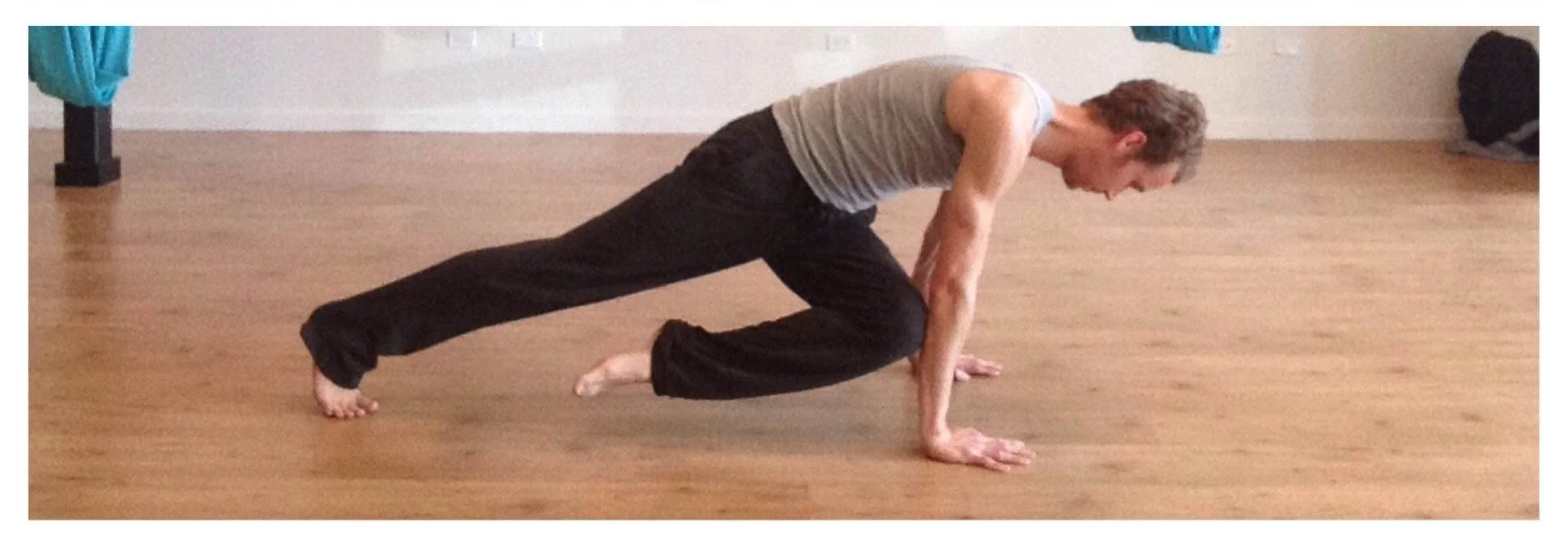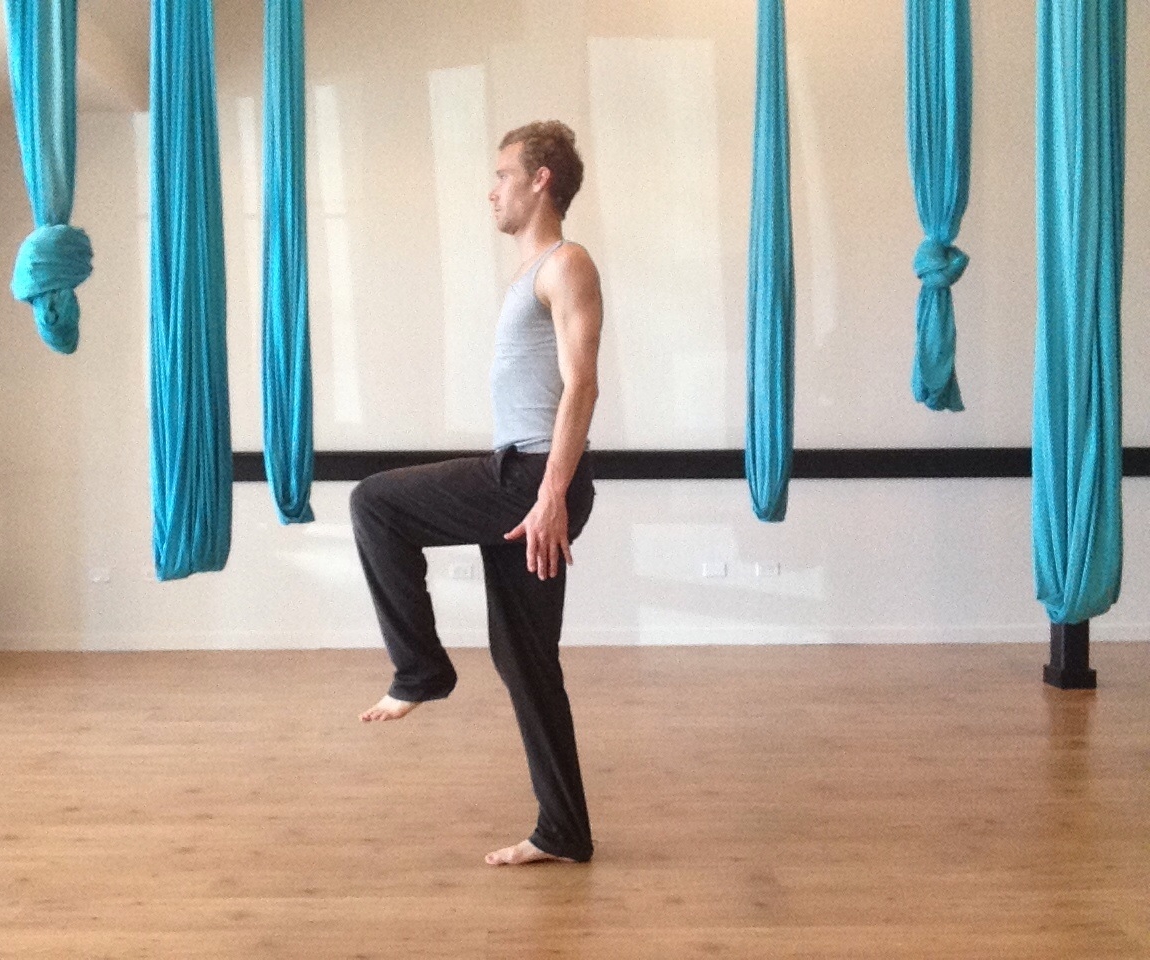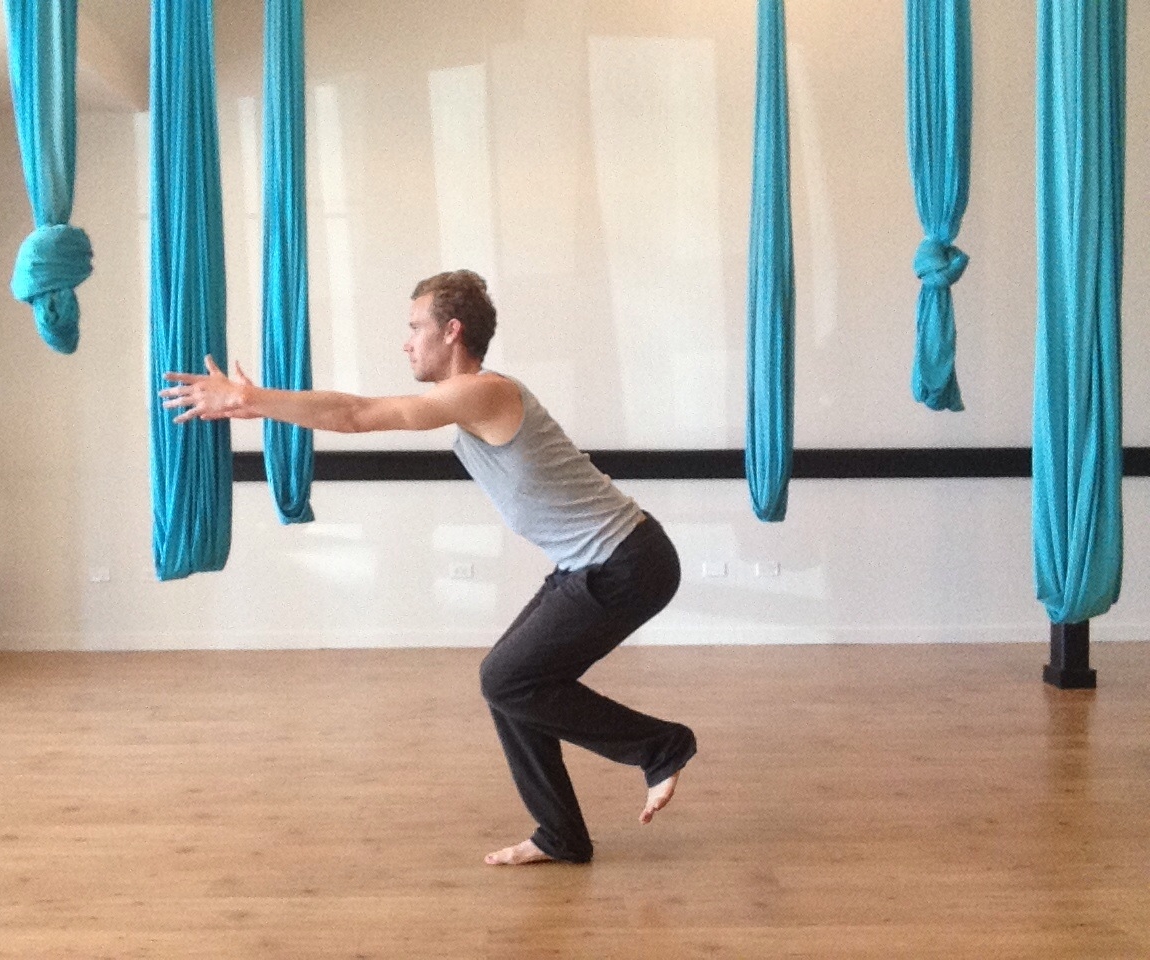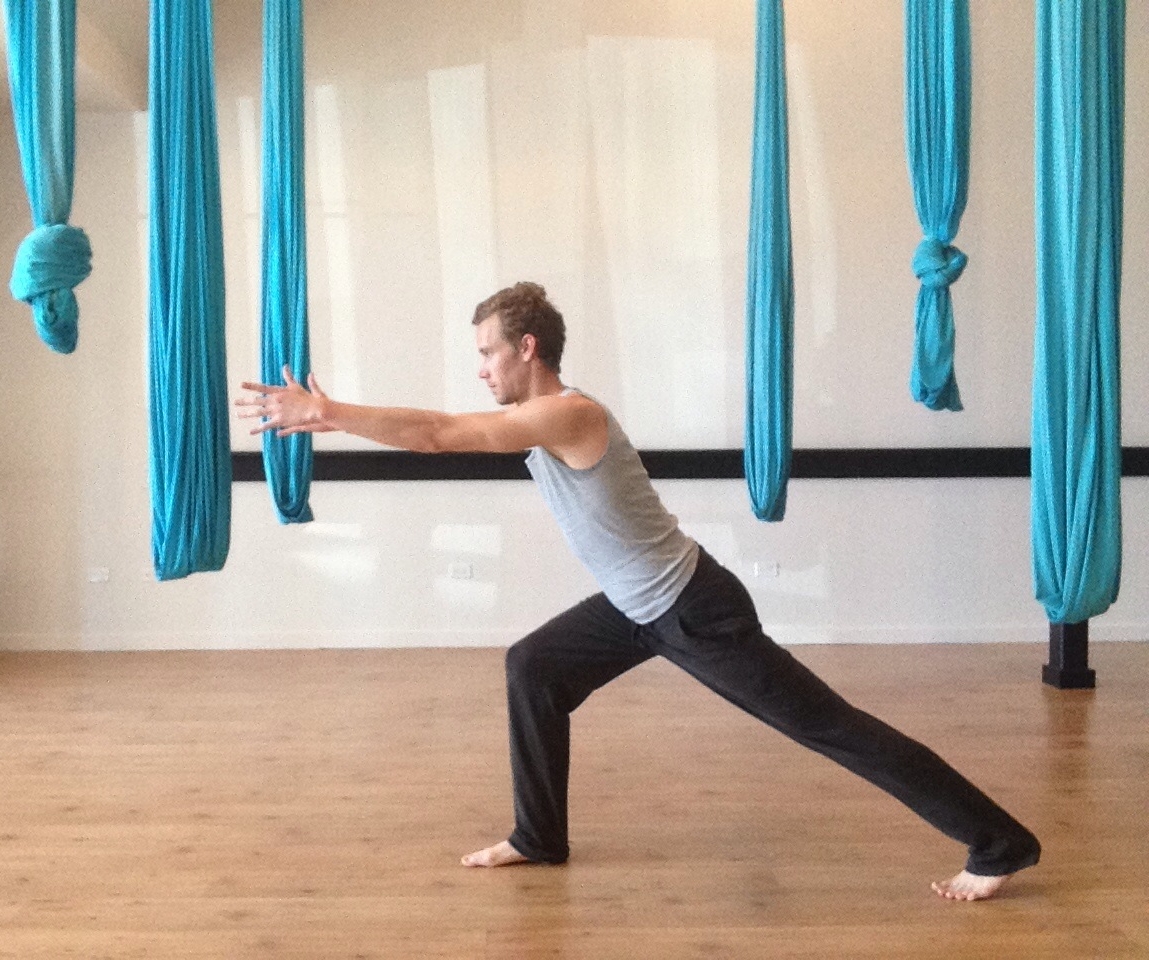Consult your health practitioner or doctor before beginning an exercise or movement program. Also check with your doctor if you have any health conditions or injuries to be sure you are cleared for exercise before practicing any movements below. If pain is felt during these movements, cease practice and refer to individual instruction from a health or fitness professional.
A Yoga Warm Up
When we think of a warm up, we often think of getting the body warm for exercise or activity. In yoga we look at the warm up a little differently. Unlike your regular jumping jacks, high knees, or warm up laps which help increasing circulation and heart rate and muscular coordination, in the yoga warm up we are work a little deeper. We are actually warming up our nervous system, creating better proprioception, awareness and postural balance. By bringing our attention to the body in easy movements and relating the parts of our body together, we prime our movement system to work with optimum efficiency during higher intensity activities. With less effort spent warming up movement, more energy can be saved for the actual activity at hand. This is just another way the practice of yoga gives a change of perspective that might change the way you "work out".
A good place to start is a simple standing pose (Mountain Pose). This is our alignment "home base". If you cannot stand efficiently, you cannot run efficiently. Spend some time simply noticing the following postural relationships:
- Feet hip width and neutral (2nd & 3rd toes point forward, the bones behind them create parallel lines - teal lines)
- Weight even in fronts and backs of feet with knees soft and relaxed
- Pelvis neutral (pubic bone/tailbone same height, sides of pelvis same height - red lines)
- Center of torso vertically aligned (center of hips, ribs and skull all vertically aligned - blue dots)
- Tops of the shoulders (blue dot) aligned beside the center line of torso (green line)
- Back of the neck long with chin gently dropping towards the chest
* Note that even though I know these principles, I am not a perfect example of posture in this picture. For example, the blue dots represent my centers, and you can see the slight shift forward in my ribs and skull. As a response my shoulders are also a little far back. Point is, there is so much to really notice in your own body. True anatomical balance is somewhat relative rather than absolute. So don't get caught up on being perfect, just observe your natural tendencies and work towards these alignment concepts in your own posture.
Mountain Pose is a great pose to do a little body scan in, look at your feet, feel your hips, find and stack your centers and create your balanced posture little by little every day. How do you think mountains were built? With steady focused energy, patience and daily commitment to building something great!
The following movements are meant to help build optimal alignment, postural control and efficiency of movement in the body. They are not intended to increase the heart rate or "work" the muscles, even though these things may happen as a result. Focus on the movements themselves, how the hips and spine relate to the legs and the alignment in the feet and knees. These are important things to connect with in the warm up so that the body can find them during the actual activity.
Hip Shift + Heel Lift
Repeat 5-10 times
Begin standing in Mountain Pose with hands on the sides of the pelvis. Allow the knees to be soft, and shift the pelvis and torso forward and backward to a comfortable edge of balance. By maintaining a vertical posture, stability is being gained by the muscles of the hips and spine. As the hips shift forward, eventually the heels lift off the floor. An additional lift should be felt through the inner thigh and core muscles leading to an extension upward of the spine.
*Squeezing a block or rolled up mat/towel between the inner thighs helps to find the inner core lift
Practice of this simple movement will reduce strain in the hamstrings, lower back and hips and strengthen the legs and core.
Chair Sit Back
Repeat 5-10 times slowly
Begin in Mountain Pose and on an inhale extend the arms forward and on the next exhale bend into the knees and sit the hips back maintaining balance in the heels and ball mounds of the feet. Allow the pelvis and torso to tip forward to the appropriate amount while remaining aligned so strain is not felt in the back or knees. Hold for an inhale and using the next exhale return to Mountain pose by lifting through the inner line and pushing through the feet.
*A block can be placed between the inner thighs to create support in the legs and spine, increasing the stabilization of the deep core.
This warm up teaches the joints of the hips, knees and ankles to work together like they do on a run. This is a great movement to create balanced action through the hips knees and ankles.
Standing Forward Fold + Twist
Repeat 3-5 times on each side Slowly
Begin standing in a forward bend with the knees with hands resting on the mat, ankles or shins. On an inhale, twist the shoulders one direction and extend that side arm upward to open the chest while extending the knee to open the outer hip and leg. Release back to a forward fold on exhale, and repeat on the second side with the following inhale. Continue the movements for the desired number of rounds.
*Bent knee forward folds provide more relief for the lower back and legs.
The legs, hips, spine and shoulders all benefit from this great warm up or cool down movement.
Lateral Hip Shifts
Repeat 5-10 times on each side
Begin standing in Mountain Pose with hands on the sides of the pelvis. Allow the knees to be soft, and shift the center of the pelvis and torso laterally over each foot to a comfortable edge of balance. Maintain even height on both sides of the pelvis. By maintaining a vertical posture, stability is being gained by the muscles of the hips and spine. An additional lift should be felt through the inner thigh and core muscles leading to an extension of the spine.
*Try bending slightly into the knee of the side you move toward to ground through the legs
Practice will reduce strain in the hamstrings, lower back and hips and strengthen the legs and core. This movement also helps to recognize imbalances between right and left sides.
Crescent Bend
Repeat 3-5 times on each side
Begin standing in Upward Reaching Pose with the fingers interlaced, palms together or pressing up. Moving the hips toward one foot and that side of the mat, allow the torso to lean the opposite direction until a stretch is felt. Pause for a deep inhalation and on the following exhalation draw the hips and torso back to center. Repeat this movement on the second side, for a single round or multiple rounds of breath.
*Wider feet provide greater support, and weight should remain even in heels and ball mounds. A soft bend in the knees also helps create more ease and depth of movement
Every part of the body receives a healthy dose of freedom and stretch with this flowing movement, especially the sides or Lateral Lines.
Chest Opener + Forward Fold
Hold 3-5 Slow, deep breaths
Begin in Mountain Pose and clasp hands behind the hips with the fingers interlaced. Engage the upper back muscles by bringing the shoulder blades toward the spine, and open the chest and shoulders by lifting the center space of the collar bones. Draw the arms up and away from the back waist, and breathe fully into the chest and upper ribs. If desired, fold forward on an exhale and perform additional breaths in a forward bend. Add a rotation like the Forward Fold + Twist by pulling the arms to either side and rotating the torso back and forth.
*Bent knee forward folds provide more relief for the lower back and legs. Wrists can be relaxed and elbows soft for an easier modification.
This pose/movement improves breath capacity and breathing mechanics while it reduces shoulder and neck tension. It is a great pose to improve posture and alignment in the upper body.
Simple Vinyasa (Downward Dog + Plank)
Repeat 5-10 times slowly
Begin in a forward bend and plant the hands on the floor the width of the shoulders. Step the feet back 3-4 feet with 2nd and 3rd toes pointing straight forward, the feet about the width of the hips. Press the chest back with soft knees, lift the hips up and back pointing the base of the pelvis upward and the crown of the head towards the wrists. Extend equally through arms and legs. On an exhale bring the shoulders forward over the wrists allowing the hips to extend into a plank. Reach back and up letting the hips hings to return to Downward Dog on the next inhale. Repeat for 5-10 rounds with the breath.
*Modify this movement by lowering the knees to the floor replacing Downward Dog with Child's Pose.
This is a total body strengthening and stretching movement. Slow repetitions benefit the whole body! It was used by the ancient yogis as a way to promote physical vitality.
Single Leg Balance
Hold on each side or alternate between sides 5-10 breaths
Begin standing in Mountain Pose with hands on the sides of the pelvis. Allow the knees to be soft, and shift the center of the pelvis and torso laterally over one foot feeling the weight fully in that foot. Lift the other foot and bring the lifted leg thigh to hip height while maintaining a level pelvis. By maintaining a vertical posture, stability is being gained by the muscles of the hips and spine and an additional lift should be felt through the center line.
*Maintain forward alignment with 2nd &3rd toes, knee and hip of lifting leg. Hands can add support when placed on a chair or wall.
Practice of this movement will reduce strain in the hamstrings, lower back and hips and strengthen the legs and core. It is helpful for walking and running mechanics especially when practiced in a warm up!
Single Leg Chair Reach Back
Repeat 5-10 times slowly on each leg
Begin in Mountain Pose to find a centered posture. Shift the weight to one side and lift the opposite foot into a Single Leg Balance. On an inhale extend the arms forward and reach the hips back while bending the standing leg knee. Allow the lifted leg to remain bent at the knee and hover or tap the foot just inside the planted foot. Extend the standing leg knee on an exhale to return to Single Leg Balance. Keep the weight evenly planted through the ball mound and heel of the standing leg foot through the movement.
*The depth of the Chair position is not as important as maintaining a level pelvis and neutral spine (see Chair Reach Back above). Notice the alignment of the 2nd &3rd toes, knees and hips!
This warm up improves single leg dynamic stability improving muscular balance in the lower body. It is a great practice for improving running mechanics.
Four Point Squat + Hip or Knee Drives
Repeat 5-10 times with even rounds on each leg
From a Downward Dog Pose, turn the toes and knees out and lower the pelvis to the heels (4 Point Squat). On an exhale, drive the hips and torso forward as the knees and hips extend to bring the shoulders over the wrists in a High Plank Pose. Keeping the core engaged, inhale and slowly reach the hips back toward the heels while the knees and hips flex and the chest pressed toward the thighs with arms overhead. Add a Knee to Elbow movement to advance this warm up (one knee drives toward outer or inner aspect of either elbow).
This movement wakes up the entire body, especially the core, hips and legs. Use this warm up to bring power and energy to the hips and legs before a speed run.
Single Leg Reach + Lunge
Repeat 5-10 times on each leg
Begin in Supported Lunge with one foot 3-4 feet behind the other at a hips distance width apart. Hands can support the body like in a High Plank, one on either side of the front foot. Inhale and lift the arms, reaching upward through the center line of the body sending the arms forward and pushing through the front foot. On an exhale, lift the back foot and extend the front balancing leg knee and hip to a Single Leg Balance. Inhale to reach the lifted leg back tapping down the foot in the same place as in the Standing Lunge.
This is a progression from Single Leg Chair Reach Back, and is a great movement to improve single leg dynamic stability at an increased range of motion, simulating that of a running stride. Add a twist in the lunge planting your opposite hand next to the front foot to progress even further. With practice, when these movements can be done easily, your running form should feel balanced and light when you hit the trail!















